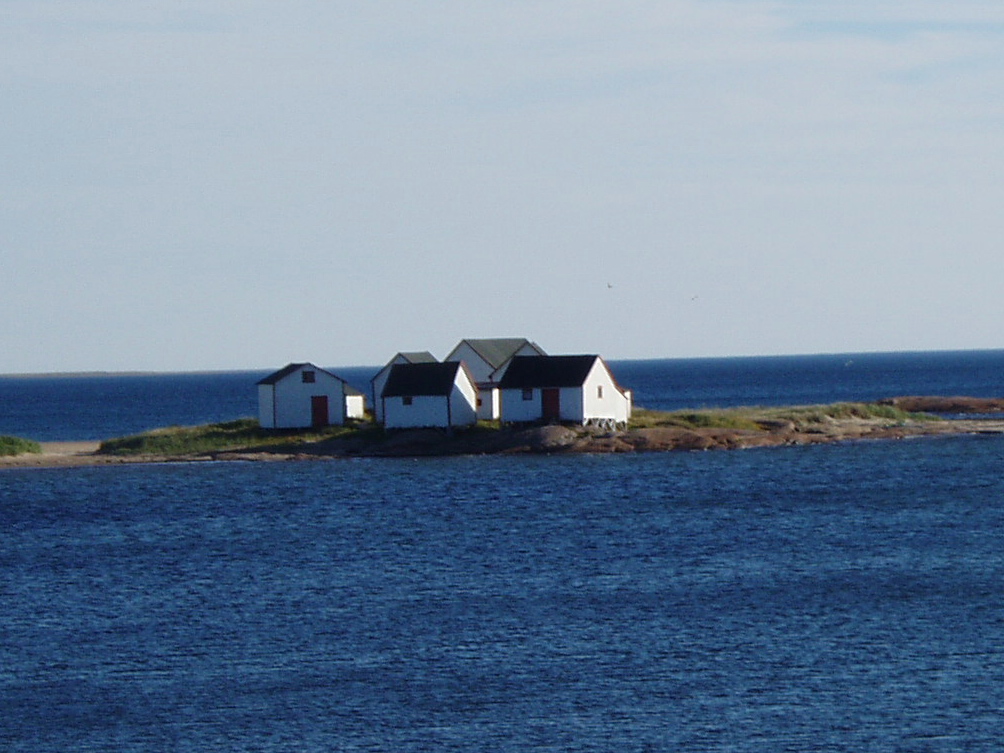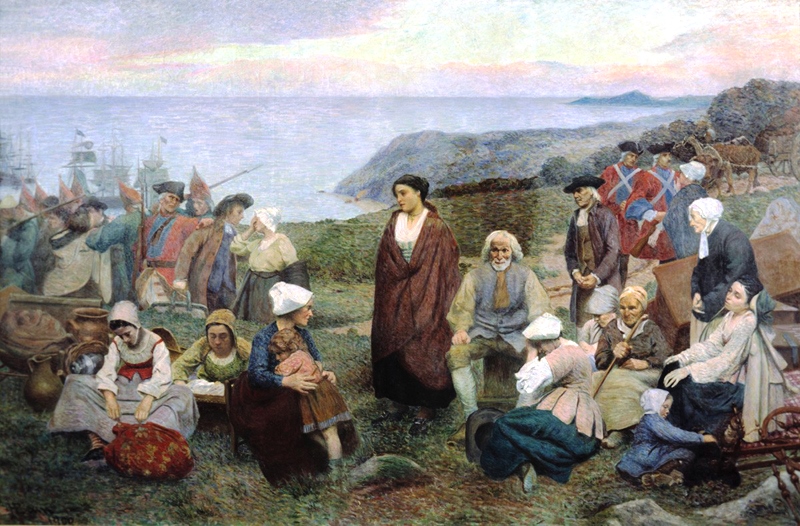|
Acadians In Quebec
The Acadians, Acadian community in Quebec is distributed across several regions and comprises individuals with diverse origins. A survey conducted by Léger revealed that over one million Quebecers have an Acadian surname. A study by the University of Quebec at Montreal (UQAM) indicates that approximately 4.8 million Quebec residents have one or more Acadian ancestors in their family tree. Montreal alone is home to approximately 200,000 individuals with Acadian heritage. The regions where Acadians reside are referred to as "Cadies", and numerous towns and villages use "Cajuns, Cadiens" as their demonym. Definitions Acadian identity (''Acadianité'') The term ''Acadianité'' delineates the defining characteristics of an Acadians, Acadian. In the The Maritimes, Maritime Provinces, the designation of ''Acadian'' is typically extended to encompass all Francophones, including several English-speaking world, Anglophones who trace their lineage to assimilated Acadians. In Quebe ... [...More Info...] [...Related Items...] OR: [Wikipedia] [Google] [Baidu] |
Acadians
The Acadians (; , ) are an ethnic group descended from the French colonial empire, French who settled in the New France colony of Acadia during the 17th and 18th centuries. Today, most descendants of Acadians live in either the Northern American Acadia (region), region of Acadia, where descendants of Acadians who escaped the Expulsion of the Acadians (a.k.a. The Great Upheaval / ''Le Grand Dérangement'') re-settled, or in Louisiana, where thousands of Acadians moved in the late 1700s. Descendants of the Louisiana Acadians are most commonly known as Cajuns, the anglicized term of "Acadian". Acadia was one of the five regions of New France, located in what is now Eastern Canada's The Maritimes, Maritime provinces, as well as parts of Quebec and present-day Maine to the Kennebec River. It was ethnically, geographically and administratively different from the other French colonies such as the Canada (New France), French colony of Canada. As a result, the Acadians developed a dist ... [...More Info...] [...Related Items...] OR: [Wikipedia] [Google] [Baidu] |
Abitibi-Témiscamingue
Abitibi-Témiscamingue () is an administrative region located in western Québec, Canada, along the border with Ontario. It became part of the province in 1898. It has a land area of and its population was 147,082 people as of the 2021 census. The region is divided into five regional county municipalities (French: ''municipalité régionale de comté'', or MRC) and 79 municipalities. Its economy continues to be dominated by resource extraction industries. These include logging and mining all along the rich geologic Cadillac Fault between Val-d'Or and Rouyn-Noranda, as well as agriculture. History The Algonquins are indigenous to the region. The first French expeditions were made in 1670 by Radisson as part of the development of the fur trade industry across the Hudson Bay region and through most of the New France colony. Fort Témiscamingue, located on the east banks of Lake Timiskaming and erected by a French merchant on Anishinaabe lands in 1720, was an important cr ... [...More Info...] [...Related Items...] OR: [Wikipedia] [Google] [Baidu] |
Saint-Zacharie
Saint-Zacharie (; Provençal Occitan: ''Sant Jacariá'') is a commune in the Var department in the Provence-Alpes-Côte d'Azur region in Southeastern France. It is located within the Aix-Marseille-Provence Metropolis, on the departmental border with Bouches-du-Rhône, northeast of Aubagne. In 2021, it had a population of 5,931. Population Points of interest * Parc du Moulin Blanc * Eglise saint-jean baptiste * Château de Montvert * The river Huveaune Notable residents * Joseph Paul Gaimard (1793–1858), naval surgeon and naturalist, was born in Saint-Zacharie. * Jean-Claude Gaudin, Mayor of Marseille. See also *Communes of the Var department The following is a list of the 153 Communes of France, communes of the Var (department), Var Departments of France, department of France. The communes cooperate in the following Communes of France#Intercommunality, intercommunalities (as of 2025 ... References Communes of Var (department) {{Var-geo-stub ... [...More Info...] [...Related Items...] OR: [Wikipedia] [Google] [Baidu] |
Beauce, Quebec
Beauce (; ) is a historical and traditional region of Quebec, Canada, located south of Quebec City. Most of it is part of the administrative region of Chaudière-Appalaches. It corresponds approximately to the regional county municipalities of Beauce-Sartigan, Beauce-Centre and La Nouvelle-Beauce, and its major communities are Saint-Georges, Sainte-Marie, Beauceville, Saint-Joseph-de-Beauce and Saint-Victor. Name The first record of the name goes back to 1739. "Nouvelle Beauce" (New Beauce) designated the '' seigneuries'' granted earlier along the Chaudière River and which would later become the current cities of Sainte-Marie, Saint-Joseph-de-Beauce, Beauceville, and Saint-Georges, as well as several other communities which would detach from these territories. According to accounts from Governor Charles de Beauharnois de la Boische and Intendant Gilles Hocquart, "Beauce" was chosen by ''seigneurs'' Joseph de Fleury de La Gorgendière, Pierre de Rigaud de Vaudreui ... [...More Info...] [...Related Items...] OR: [Wikipedia] [Google] [Baidu] |
Saint-Gervais, Quebec
Saint-Gervais () is a village of 2,100 people in the Bellechasse Regional County Municipality, part of the Chaudière-Appalaches administrative region of Quebec, Canada Canada is a country in North America. Its Provinces and territories of Canada, ten provinces and three territories extend from the Atlantic Ocean to the Pacific Ocean and northward into the Arctic Ocean, making it the world's List of coun .... It is named in honour of Gervasius, martyr with Protasius in the year 57. References Municipalities in Quebec Incorporated places in Chaudière-Appalaches Canada geography articles needing translation from French Wikipedia {{ChaudièreAppalaches-geo-stub ... [...More Info...] [...Related Items...] OR: [Wikipedia] [Google] [Baidu] |
Chaudière-Appalaches
Chaudière-Appalaches (, ) is an administrative region in Quebec, Canada. It comprises most of what is historically known as the " Beauce" (; compare with the electoral district of Beauce). It is named for the Chaudière River and the Appalachian Mountains The Appalachian Mountains, often called the Appalachians, are a mountain range in eastern to northeastern North America. The term "Appalachian" refers to several different regions associated with the mountain range, and its surrounding terrain .... Chaudière-Appalaches has over 50% of sugar maples in Quebec, thus producing the most maple syrup in Canada as well as the World. Chaudière-Appalaches has a population of 433,312 residents (as of the Canada 2021 Census) and a land area of . The main cities are Lévis, Saint-Georges, Thetford Mines, Sainte-Marie and Montmagny. Administrative divisions Regional county municipalities Equivalent territory Major communities * Beauceville * L'Islet * Lac-Etchemin * Lév ... [...More Info...] [...Related Items...] OR: [Wikipedia] [Google] [Baidu] |
Odanak
Odanak is an Abenaki First Nations reserve in the Central Quebec region, Quebec, Canada. The mostly First Nations population as of the 2021 Canadian census was 481. The territory is located near the mouth of the Saint-François River at its confluence with the St. Lawrence River. It is partly within the limits of Pierreville and across the river from Saint-François-du-Lac. ''Odanak'' is an Abenaki word meaning "in the village". History Beginning about 1000 CE, Iroquoian-speaking people settled along the St. Lawrence River, where they practiced agriculture along with hunting and fishing. Archeological surveys have revealed that by 1300, they built fortified villages similar to those seen and described by French explorer Jacques Cartier in the mid-16th century, when he visited Hochelaga and Stadacona. However, by 1600, the villages and people were gone. Since the 1950s, historians and anthropologists have used archeological and linguistic evidence to develop a consensus ... [...More Info...] [...Related Items...] OR: [Wikipedia] [Google] [Baidu] |
Saint-Pierre-les-Becquets
Saint-Pierre-les-Becquets () is a village municipality located in the Centre-du-Québec region of the province of Quebec, Canada. It is situated on the south shore of the St. Lawrence River, approximately east-northeast of Montreal and southwest of Quebec City. The village is part of the Bécancour Regional County Municipality and has a population of 1,183 people according to the 2021 Canadian census. History The area where Saint-Pierre-les-Becquets now stands was originally inhabited by the First Nations peoples. The first European to arrive in the area was Jacques Cartier in 1535. The village was founded in 1847 and was originally named Saint-Pierre-de-Becquets, in honour of the Saint Pierre River which flows through the area and to Romain Becquet. It was officially incorporated as a municipality in 1855. The village is home to several historic buildings and landmarks, including the 19th-century Église de Saint-Pierre-les-Becquets, which was designed by architect Victor Bo ... [...More Info...] [...Related Items...] OR: [Wikipedia] [Google] [Baidu] |
Nicolet, Quebec
Nicolet () is the county seat of Nicolet-Yamaska Regional County Municipality, Quebec, Canada. The population as of the Canada 2016 Census was 8,169. It is the seat of the Roman Catholic Diocese of Nicolet. The residents of the town pronounce the final "t" in Nicolet, but people outside of the region do not. History The town took its name from Jean Nicolet, a French explorer and clerk of the Company of One Hundred Associates, who explored the Great Lakes region west to Wisconsin. Despite never having lived there, he explored the area during the seven years he lived in Trois-Rivières. The area was originally settled by the Abenaki tribe, who knew it as ''Pithigan'' or ''Pithiganek'', meaning "entrance". French colonial settlement of Nicolet area began in the late 17th century, with Pierre Monet de Moras constructing a seigneurial manor on what is now known as Moras Island. Rights to the territory of Nicolet were accorded in 1672 by Jean Talon, passing through several hand ... [...More Info...] [...Related Items...] OR: [Wikipedia] [Google] [Baidu] |
Centre-du-Québec
Centre-du-Québec (, ''Central Quebec'') is a region of Quebec, Canada. The main centres are Drummondville, Victoriaville, and Bécancour. It has a land area of and a 2016 census population of 242,399 inhabitants. Description The Centre-du-Québec region was established as an independent administrative region of Quebec on July 30, 1997 (in effect August 20 upon publication in the Gazette officielle du Québec); prior to this date, it formed the southern portion of the Mauricie–Bois-Francs region (the northern part of which is now known simply as Mauricie). Centre-du-Québec is not located in the geographic centre of Quebec, though it is approximately located in the centre of the southern portion of the province. Some consider the name Bois-Francs to be synonymous with the Centre-du-Québec region; others see it as being synonymous with Arthabaska Regional County Municipality, with its main city Victoriaville earning the title ''Capitale des Bois-Francs'' (capital of the ... [...More Info...] [...Related Items...] OR: [Wikipedia] [Google] [Baidu] |


